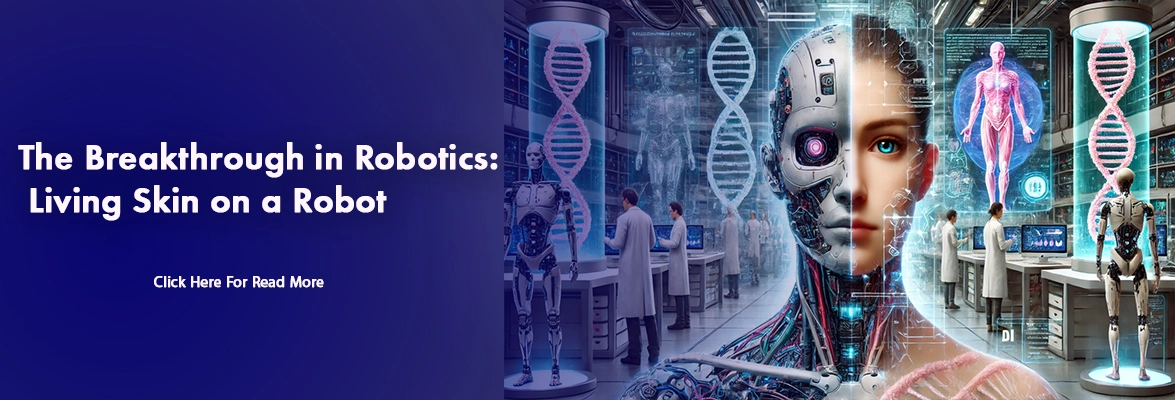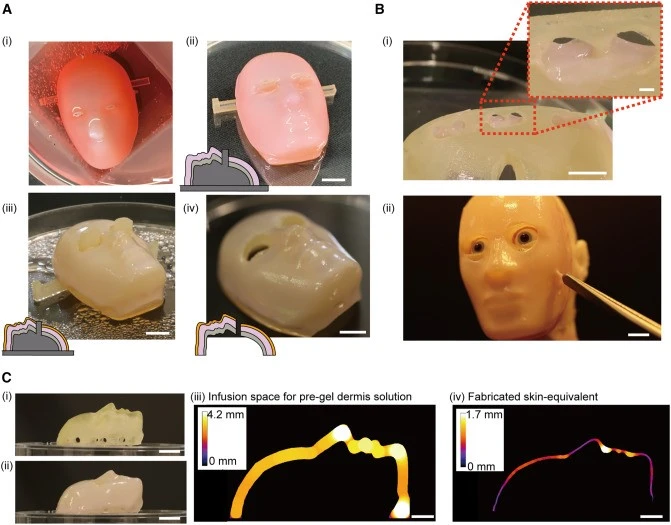

Recently, Japanese scientists have made a groundbreaking discovery by creating living robot skin using human cells. This innovative research was conducted by a team from the University of Tokyo, led by Professor Matsumoto, and published in Cell Reports Physical Science. The research team has found a way to attach living skin to humanoid robots. The robots will have more realistic facial expressions and be able to display emotions such as smiling. According to a BBC report, the team explains that the process involves copying the facial tissue structures of humans.

The scientists used induced pluripotent stem cells (iPSCs) derived from human skin to create biohybrid robot skin. By combining the iPSC-derived cells with a biodegradable scaffold, the researchers were able to create a living material that could be integrated into robotic systems. The study also focused on developing a new type of synthetic skin that is not only lifelike in appearance but also has the ability to heal itself. The researchers achieved this by culturing human stem cells in a specially designed mold, which allowed the cells to grow and differentiate into the various layers of skin tissue. The resulting living robot skin not only closely resembles human skin in terms of texture and flexibility, but also has the remarkable ability to regenerate itself when damaged.
One of the most intriguing aspects of this living robot’s skin is its ability to simulate human expressions, including the ability to smile. This feat was achieved through the latest advances in tissue engineering and robotics. By embedding muscle-like structures into the living robot’s skin and using a control mechanism, the researchers were able to generate facial movements that resemble a human smile. Although the first samples of this advancement are relatively terrifying robots, researchers say that this research will pave the way for the creation of humanoid robots with regenerated skin. Professor Shoji Takeuchi, leader of the research team, said:
“By mimicking the structure of human skin and using special V-shaped holes in solid materials, we have found a way to connect the skin to complex structures. The natural flexibility of the skin and its strong adhesive properties mean that the skin can move with the robot’s mechanical components without tearing or breaking.” The researchers say that several years of testing are needed before this technology can be used in the robotics industry. Professor Tajuchi also cited creating human-like emotions in robots as one of his biggest challenges.

The development of living robotic skin has the potential to revolutionize a wide range of industries, including healthcare, robotics, and prosthetics. In healthcare, this technology could be used to create more realistic and functional artificial organs, leading to significant advances in the treatment of medical conditions. In robotics, robots with living skin could be used to perform tasks that require a high degree of sensitivity and dexterity, such as surgical procedures or delicate manufacturing processes. This technology could also help us in the field of regenerative medicine. The use of iPSC-derived cells to create living robot skin could also be applied to the development of artificial skin grafts for patients with burns or other skin disorders. By using the same techniques used to create biohybrid robot skin, scientists could potentially create functional skin substitutes that could be used to treat patients in need of skin replacement.

Opening Hours:
24/7
Address: Tradex Mena International Consulting Group L.L.C-FZ 6th Floor, Business Center, The Meydan Hotel Grandstand, Meydan Road, Nad Al Sheba, Dubai, United Arab Emirates
+971 50 240 9735
Address: TRADEX INTERNATIONAL CONSULTING DANIŞMANLIK
itH. iHr. ve TiC. LTD. ŞTi.
Tomtom Mah. istiklal Cad. Beyoğlu iş Merkezi No.187 iç Kapr No: 4 Beyoğlu/iSTANBUL Beyoğlu V.D. 8591125255
Robotic Live Skin !
WOOOW